I spent a lot of time over the last year, where often my only option to play a game has been on my own. Fortunately, solo modes are now commonplace in board games, so there’s never been a better time to be locked-down with your cardboard collection.
Solo gaming is nothing new. Our parents and grandparents spent countless hours playing various card and tile games on their own. Confused? Think about it – Solitaire, Mahjong, Freecell, Spades. While these are still great games (and free to play with those links above), things have moved on. During this, and the next couple of blog posts, I’m going to take a look at the options available for the solitaire gamer, the systems used, the games that do it well, and those that don’t.
In the next post, I’ll be looking at AI and automa opponents in games, but for now let’s get stuck in with the first part: solo games where the aim is to…
Beat your own score
Ever since the early coin-op cabinets like Space Invaders, chasing the elusive high score has been a goal for game players the world over. The majority of modern board games use a scoring concept in one form or another, usually named Victory Points (VPs), so it seems like a natural fit to create a solo mode which has you try to beat your own best score.
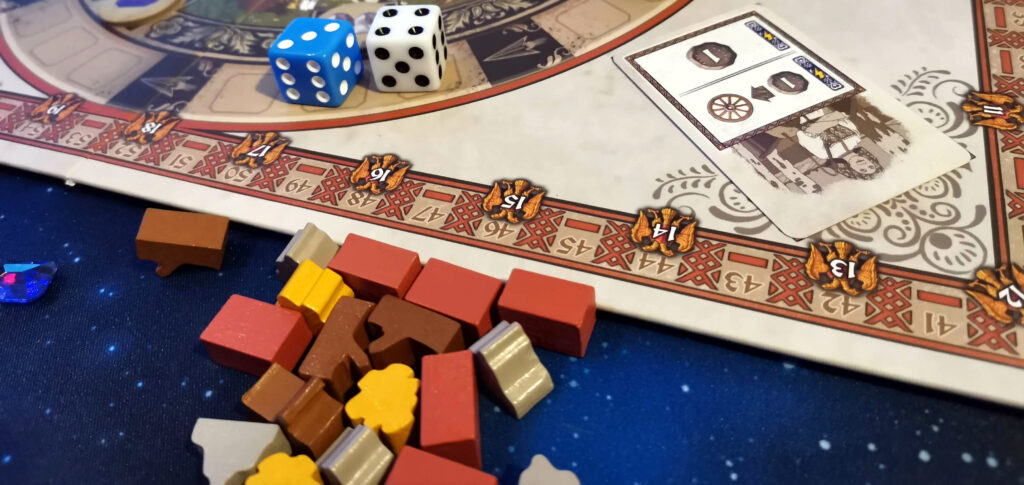
Board games with this option usually have one common feature. More accurately, they have one common omission – an opponent. Beat your own score solo modes normally build in some kind of round or turn limitation. Without this, it would be very difficult to make a balanced game, as one play might see you take more turns than another, giving you a better chance of getting a better score.
Let’s look at some examples.
The good
In my opinion, the best designer of beat-your-own-score modes is Uwe Rosenberg. The brain behind seminal classics like Agricola and Caverna, right through to modern hits like Nusfjord and Hallertau. He has a signature way of creating his solo modes.
There’s no automa opponent, but you take extra workers (his games are often worker placement games). You alternate between placing your two sets of workers on alternate rounds, but the previous set of workers remain on the board, blocking spaces and limiting your options. In Nusfjord for example, this means you have plan building fishing boats carefully, as there’s only one place to do it on the board. Use it this round, and you can’t use next round, because your worker will be left there. Of course, there’s always the ‘copy an action’ action space, but what if you wanted to use that for something else? Arrrgh! Darn you, me!
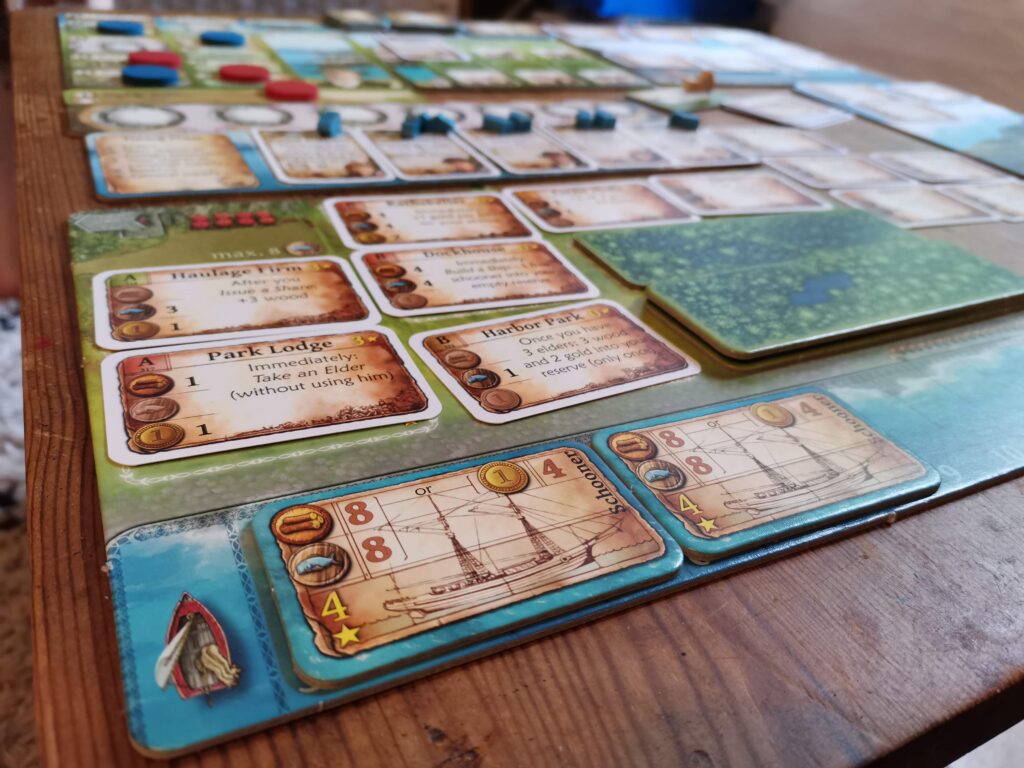
It’s clever, because it feels like you’re playing against an opponent, but you aren’t. That annoying git who’s blocking the spot you want, is you, from a round ago. For some reason I can’t quite put my finger on, I really like his approach. It’s a bit like being given a puzzle to do, but being told that you can make up most of the rules. I find Uwe’s games compulsive, and chasing a score doesn’t feel like a tacked-on option. It feels like a good enough reason to buy the games, knowing that you’ll only play it solo most of the time. In fact, I would rather play the solo campaign mode of Nusfjord than play the normal game with more people. High praise indeed.
Terraforming Mars by Jacob Fryxelius is an example of a designer realising that their usual game wouldn’t work by making the player just play the base game with no changes. Instead, they introduced a solo challenge mode, which revises the rules for setup and starting conditions, and challenges the player to complete the terraforming in 14 turns. If you don’t manage it, you lose, but if you do, then you’re aiming for the highest score you can manage. Now let’s have a look at what happens when a designer doesn’t make the necessary changes to the game.
The… not-so-good
‘Bad’ would have been the wrong word to use. I’ve yet to play a truly bad solo mode. But there are a few which don’t do beat-your-own-score as well as the others. One such game, is actually a game I really, really like, and reviewed here recently – Praga Caput Regni. I love Vladimir Suchy’s games, his designs are brilliant, but the solo for this one was disappointing.
The default solo mode in the box has you playing the game without any other players, which the mechanisms allow. The problem though, is that without any other players, some actions become all but pointless. For example, placing buildings around a plaza in the town rewards bonuses when a plaza is surrounded. When multiple players are placing the buildings, that’s great, as there are lots of buildings going around lots of plazas. In the default solo game, if you place the buildings yourself it’s very difficult to surround even just one good plaza. So why would you bother?
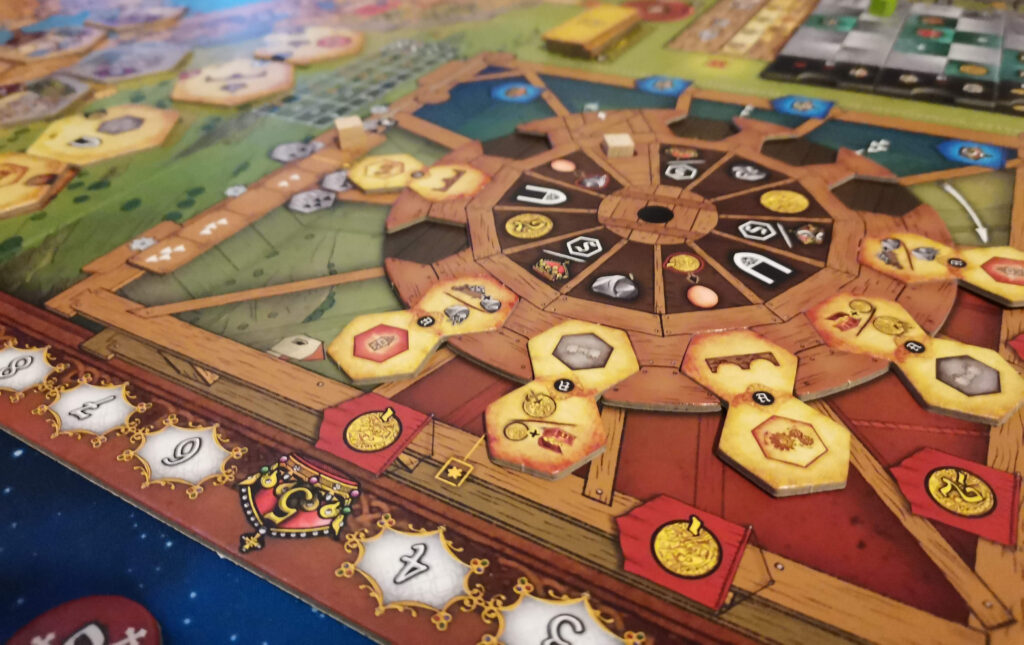
There’s a downloadable opponent for the game (I made a digital version here), which is both good and bad. Good, because it places buildings down, so you can score with plazas, but bad because it feels like it’s an automa opponent, but it isn’t. It doesn’t score points, and you don’t compete with it for a win or loss, which is a shame. Don’t get me wrong, Praga Caput Regni is a brilliant game, and I love it, it’s just the solo mode which is disappointing. It’s an example of where beating your own score isn’t as simple as the designer saying ‘Play the game as normal and see what you can score’, because the loss of an opponent means you can’t play the game as normal.
The others
There are some games which don’t really fit into the two areas above, and that’s because they’re designed for either one player, or loads of players.
When it comes to games made for one player, you’d do well to find a better example than Nemo’s War: 2nd Edition, which I reviewed last year. It does have a win/lose condition, whereby you have to make it to the finale card and complete it, but if you manage that, then there’s a score to compute. Scores are based on the motivation you picked at the start of the game, and multipliers are used to score the things that thematically match that motivation higher than those that don’t. This is taken one step further by giving you an epilogue book in the box. When you finish the game, you find the section in the book that matches your score, and it finishes off the story you’ve created over the last hour or two. It’s a great example of solo scoring done well.
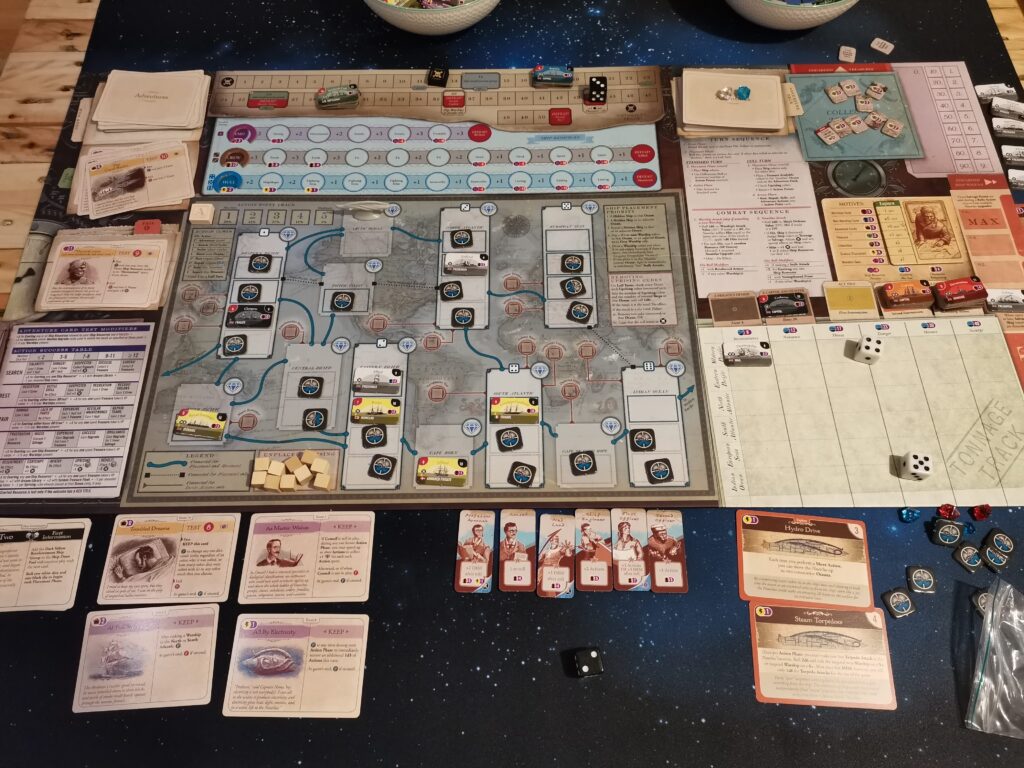
Maybe surprisingly, there’s a whole heap of games that can be played with huge player counts, which work perfectly for solo, beat-your-own-score play. Many of them are roll and write games. The reason they work so well is because the game is played identically in most cases, whether you’re playing by yourself or with ten others. I’m talking about games like the Clever series (all players playing the solo mode, copying the communal dice) which include Ganz Schön Clever (review here) and others like Metro X, Railroad Ink, Super-Skill Pinball: 4-Cade. There are a few others in this vein that don’t automatically work, because the game involves interaction between players. Cartographers is a great example of this, but overcomes it by introducing a solo mode with modified rules.
Would you enjoy beat-your-own-score?
I’ve heard quite a few people say they won’t play this type of solo mode in a game. That’s fair enough, it’s not going to be for everyone. However, there’s a chance some of you have just had a disappointing experience with the ones you’ve tried so far, and some of you who wouldn’t even consider it. My advice would be:
- Try an Uwe Rosenberg game. Specifically, Nusfjord if you can get hold of it. This time last year, you could have picked it up for less than £20 in the UK (I know, because I did), so you should be able to buy it for less than the bigger games like Hallertau or A Feast For Odin. Play a game or two to get the hang of it, then play the campaign mode from the back of the rule book. It’s a really chilled-out game, the boards are completely modular, so you can get it on just about any table, and it’s a great game in its own right.
- Try Ganz Schön Clever. You can get it for less than £15, it’s simple enough that you could get your parents playing with you after dinner one night, and it’s a tiny box that won’t take up too much precious shelf space. The wooden dice, little pens, tear-off score sheets – everything about the game is just really charming.
- Go digital. There some great apps for computers and phones & tablets, which are digital adaptations of some of the games I’ve talked about. If you’re not sure whether you want to buy Terraforming Mars, spend a few pounds on the digital version and you can try the solo mode. You’ll also be able to play it online with your friends, or experience the normal game against some AI players. The same goes for the Clever games, and Cartographers, the apps are great implementations that let you try the game without paying for the full physical version first. If you enjoy them, I’d still recommend getting the physical versions, so that when we can meet actual human beings again soon, you can share the enjoyment with them.
Let me know what your favourite beat-your-own-score game is in the comments below, it might be a new favourite for me. I’ll be back with part two soon, where I’ll be taking a look at automa / AI opponents.
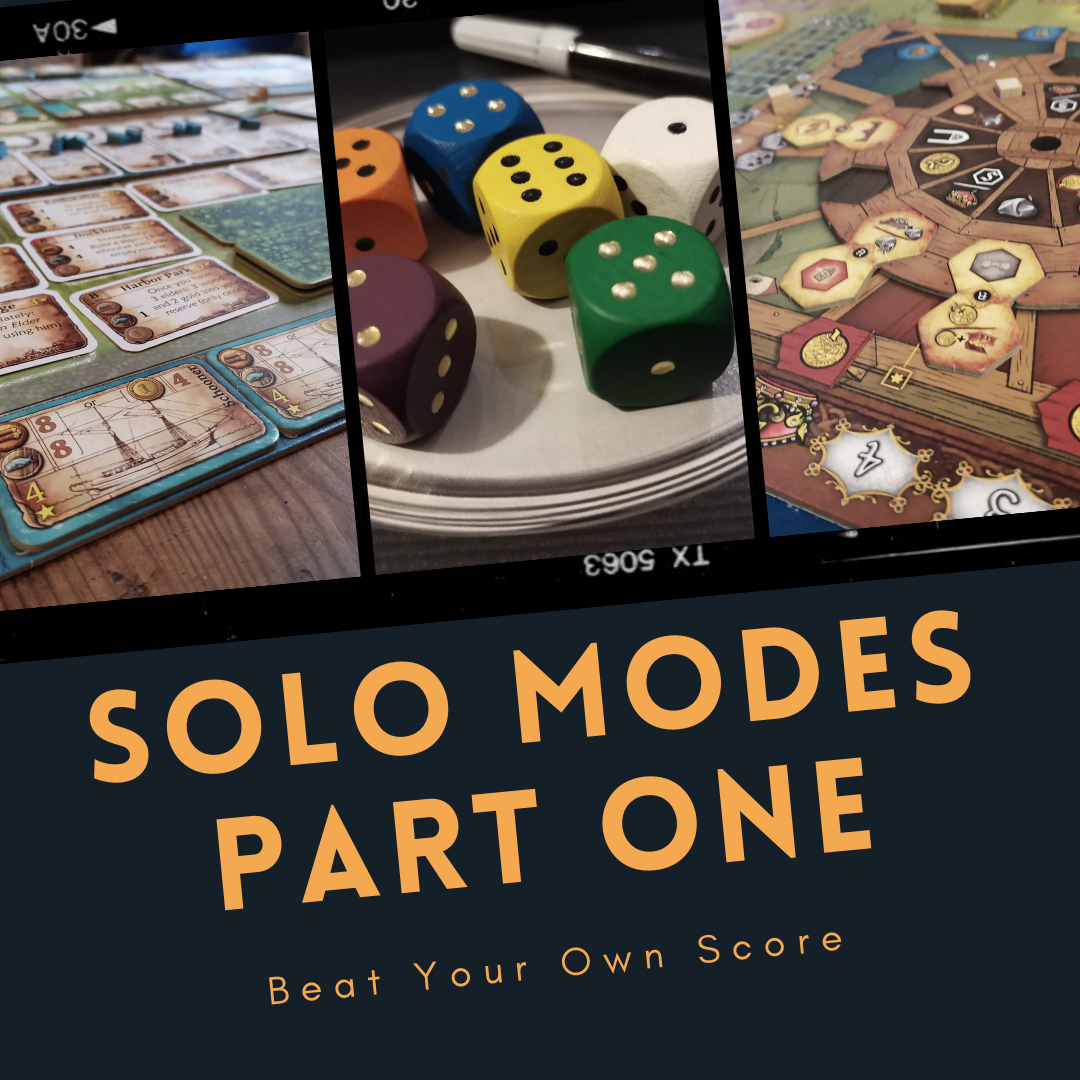
I really enjoy Nusfjord! Great pick! Other than that I’d say Explorers of the North Sea is an interesting pick-up-and-deliver to play solo with a beat your own score. I find this type of game to be less stressful to play and more relaxing to play than a win/lose 🙂
I’ve still not played the North Sea games, I started with the West Kingdom games, and I prefer the heavy stuff, but I’ll keep an eye out for this one now, thanks for the tip 🙂